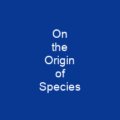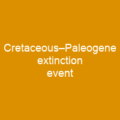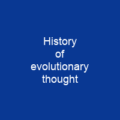Evolution: The Unfolding Story of Life
The Genesis of Evolutionary Theory
Imagine a world where life forms change over time, adapting and transforming through generations. This is the essence of evolution, a process that has shaped every living being on Earth. The scientific theory of evolution by natural selection was conceived independently by Charles Darwin and Alfred Russel Wallace in the mid-19th century. It’s fascinating to think about how two individuals, working in isolation, came up with such a profound idea.
Observing the Evidence
Evolution is established through observable facts: more offspring are produced than can survive; traits vary among individuals; different traits confer differential fitness; and these traits are passed from generation to generation. This process combines Mendelian inheritance, population genetics, and DNA molecules passing information through natural selection, genetic drift, mutation, and gene flow.
The Common Ancestor
Tracing back the history of life on Earth reveals a common ancestor shared by all living beings. The fossil record shows progression from early biogenic graphite to microbial mat fossils to fossilized multicellular organisms. This timeline paints a vivid picture of how complex life forms have evolved over billions of years.
The Impact of Evolution
Evolution has influenced various fields, including agriculture, medicine, and computer science. By studying aspects of evolution and forming hypotheses based on evidence, scientists can develop new theories that enhance our understanding of the natural world. For instance, in agriculture, understanding evolutionary processes helps breed crops more resilient to environmental challenges.
Genetics and Heredity
Heredity occurs through changes in inherited characteristics controlled by genes within an organism’s genome. The complete set of observable traits is called its phenotype. DNA, a molecule that encodes genetic information, plays a crucial role in heredity. Portions of DNA are called genes, which have different sequences of bases. These genes are passed from one generation to the next through cell division.
The Role of Mutations
Mutations are the ultimate source of genetic variation and can result in changes to gene function, no effect, or new functions. Most mutations are neutral, while some confer fitness benefits or are detrimental. New genes can be generated through duplication, mutation, and recombination, often involving small parts of existing genes being duplicated and recombined into new combinations with new functions.
Selection and Speciation
Natural selection acts at multiple levels, including genes, cells, organisms, groups, and species. Genetic drift is the random fluctuation of allele frequencies within a population, which can cause genetic changes due to chance alone. This form of neutral theory has been debated since it doesn’t fit genetic variation seen in nature. A better-supported version is the nearly neutral theory, which suggests that mutations can be effectively neutral in small populations but not necessarily in large ones.
Speciation and Extinction
Speciation occurs when a species diverges into two or more descendant species. There are different approaches to defining the concept of ‘species,’ including interbreeding, ecological, and phylogenetic approaches. The Biological Species Concept states that species are groups of actually or potentially interbreeding natural populations that are reproductively isolated from other groups.
Extinction is the disappearance of an entire species and has occurred continuously throughout Earth’s history. Mass extinction events, such as the Cretaceous-Paleogene event, have had a significant impact on species diversity. The current Holocene extinction event is ongoing and primarily caused by human activities.
The Future of Evolutionary Biology
Understanding evolution can help identify genes involved in human genetic disorders and has various applications in medicine, including the study of evolving diseases such as cancer and antibiotic resistance. In computer science, simulations of evolution using evolutionary algorithms and artificial life started in the 1960s.
The Journey Continues
From the earliest forms of life to the complex organisms we see today, evolution is a continuous process that shapes our world. As we delve deeper into the mechanisms driving evolution, we uncover new ways to apply this knowledge in fields ranging from medicine to technology. The journey of understanding evolution is far from over; it’s an ongoing exploration that continues to reveal the intricate tapestry of life on Earth.

You want to know more about Evolution?
This page is based on the article Evolution published in Wikipedia (retrieved on November 30, 2024) and was automatically summarized using artificial intelligence.







